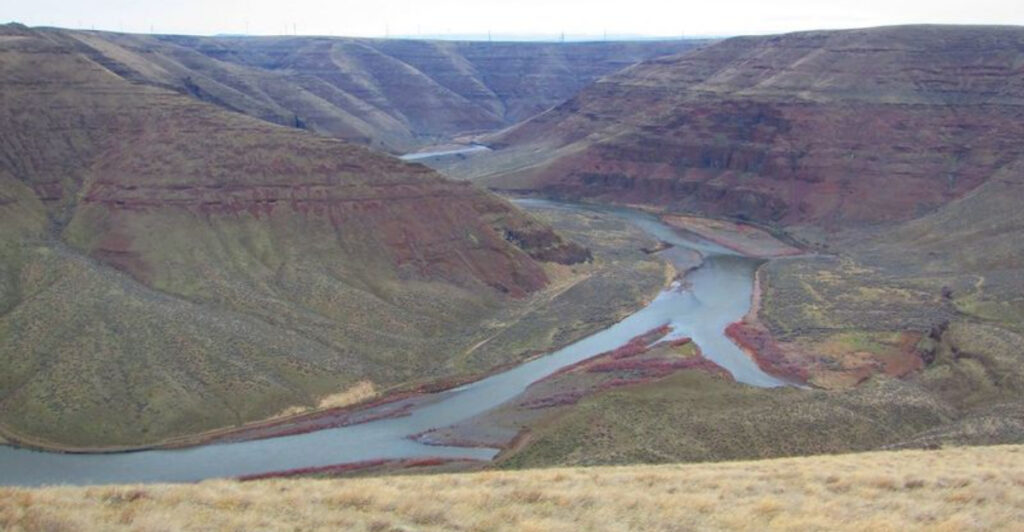Hidden in Oregon’s eastern high desert lies a breathtaking wilderness that most visitors never discover. Cottonwood Canyon State Park spans over 8,000 acres of rugged canyon country along the John Day River, making it the state’s second-largest park. Since opening in 2013, this remote gem has offered adventurers a chance to explore towering basalt cliffs, spot bighorn sheep, and camp under some of the darkest skies in the Pacific Northwest.
1. Massive Scale Makes It Oregon’s Second-Largest State Park
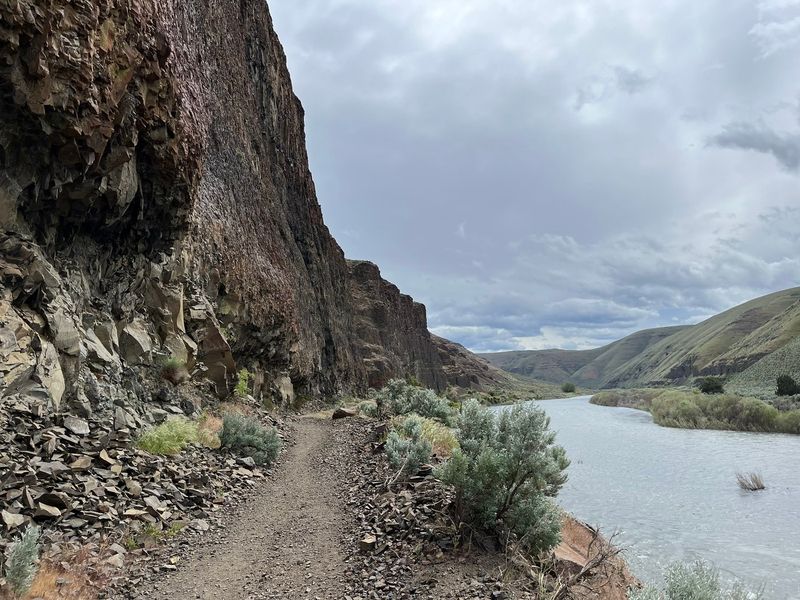
Stretching across 8,000 acres of high desert landscape, this park dwarfs most other Oregon state parks in sheer size. The vast expanse includes deep canyons, rolling grasslands, and 16 miles of the John Day River winding through dramatic terrain.
Established in 2013, the park bridges Sherman and Gilliam counties in north-central Oregon. Walking from one end to the other would take hours, giving visitors a true sense of the American West’s wide-open spaces.
Most people underestimate how much ground they can cover here, making it perfect for multi-day adventures and exploration.
2. Towering Basalt Cliffs Create a Dramatic Desert Cathedral
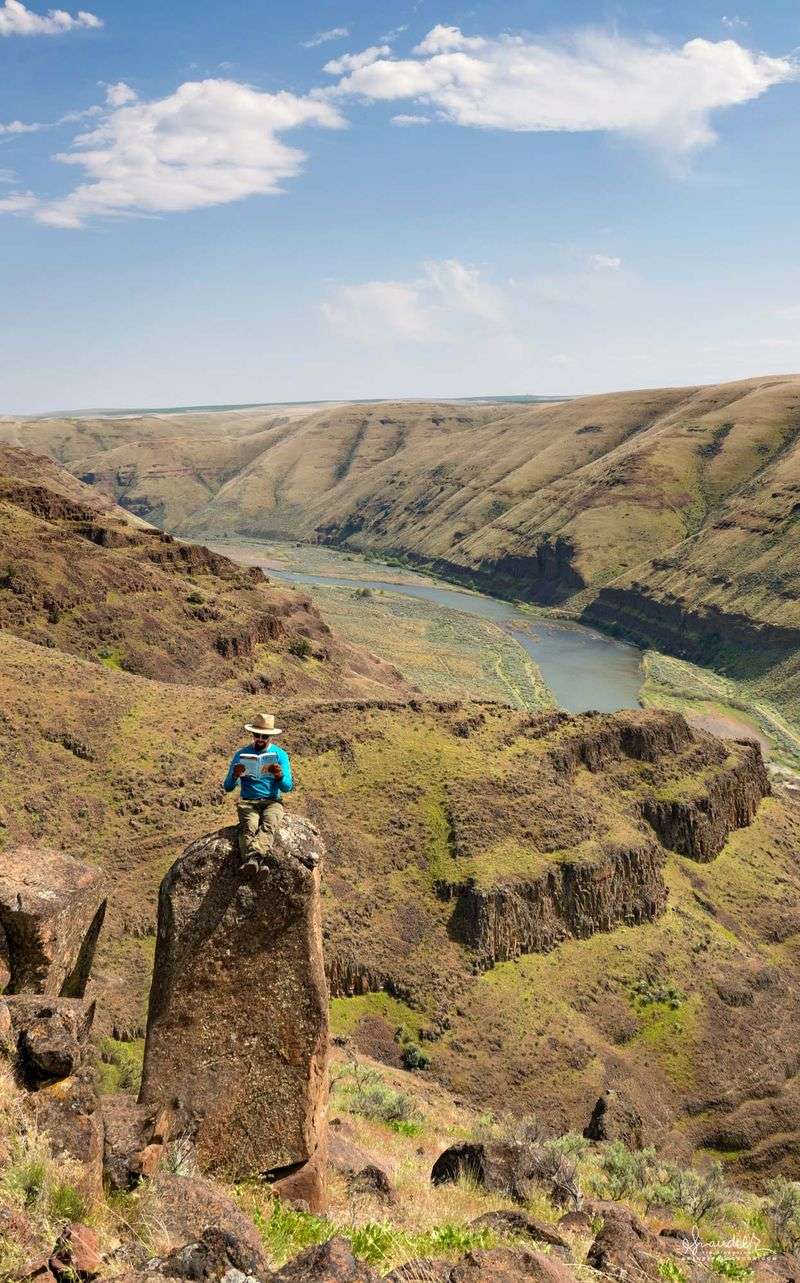
Millions of years of geological forces carved these stunning vertical rock walls from ancient lava flows. The basalt cliffs rise hundreds of feet above the river, creating natural amphitheaters and narrow side canyons that echo with every footstep.
Photographers love the way morning and evening light plays across these dark volcanic walls. The contrast between the black rock and golden grasslands creates some of Oregon’s most striking desert scenery.
Rock climbers find challenging routes here, while hikers enjoy scrambling through the boulder fields at the base of these imposing formations.
3. John Day River Offers 16 Miles of Pristine Water Adventures
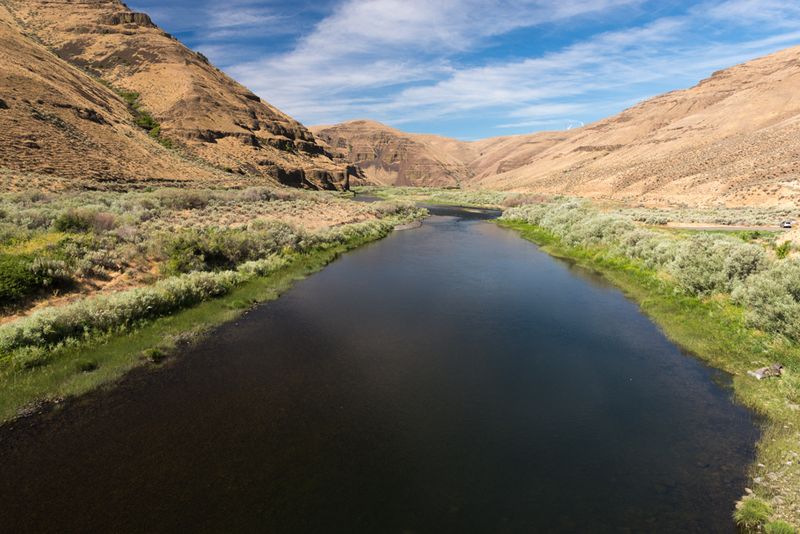
The longest undammed river in Oregon flows peacefully through the heart of the park, offering crystal-clear water perfect for fishing and paddling. Steelhead, Chinook salmon, and smallmouth bass thrive in these protected waters, making every cast an exciting possibility.
Kayakers and rafters enjoy gentle Class I rapids mixed with calm pools ideal for wildlife watching. The river stays cool even during hot summer days, providing refreshing swimming holes.
Early morning and evening hours bring the best fishing, when deer and elk often come to drink at the water’s edge.
4. Four Side Canyons Offer Hidden Exploration Opportunities
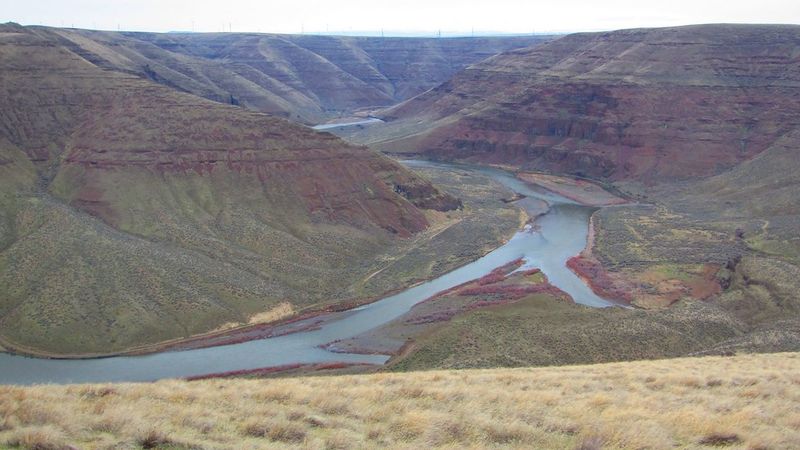
Beyond the main canyon, adventurous visitors can explore Hay Creek, Esau, Rattlesnake, and Cottonwood canyons, each with unique character and secrets. These narrow side draws wind deep into the surrounding hills, often ending at hidden springs or seasonal waterfalls.
Rattlesnake Canyon features the most dramatic rock formations, while Cottonwood Canyon stays green longer thanks to underground water sources. Hay Creek offers the easiest hiking access for families with young children.
Wildlife uses these canyons as corridors, making them excellent spots for patient observers hoping to spot elk or bighorn sheep.
5. Rocky Mountain Bighorn Sheep Rule the High Cliffs
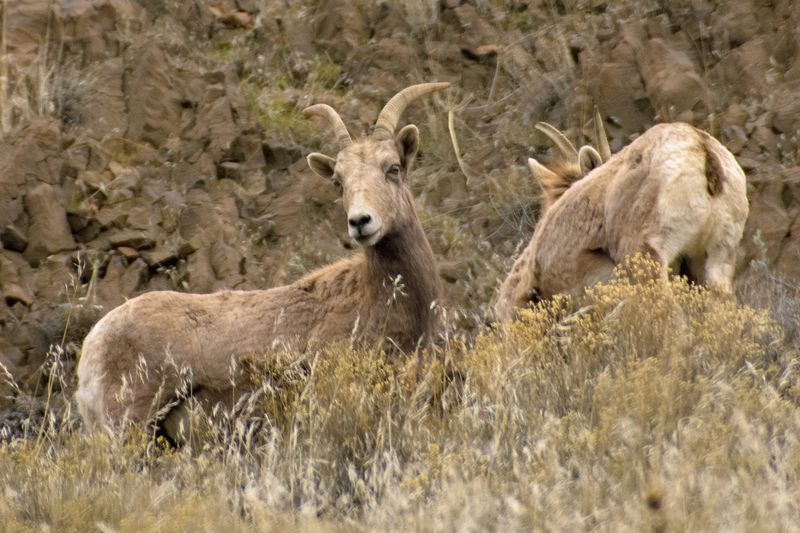
Few sights match the thrill of spotting a bighorn sheep navigating seemingly impossible cliff faces with casual grace. These magnificent animals were reintroduced to the area and now thrive among the basalt ledges, often seen in small herds during early morning hours.
Males can weigh up to 300 pounds, with their iconic curved horns growing throughout their lifetime. During rutting season in fall, visitors might hear the crack of horns clashing as rams compete for dominance.
Binoculars are essential for sheep watching, as they prefer high, rocky terrain where they can spot predators from miles away.
6. International Dark Sky Designation Creates Stargazing Paradise
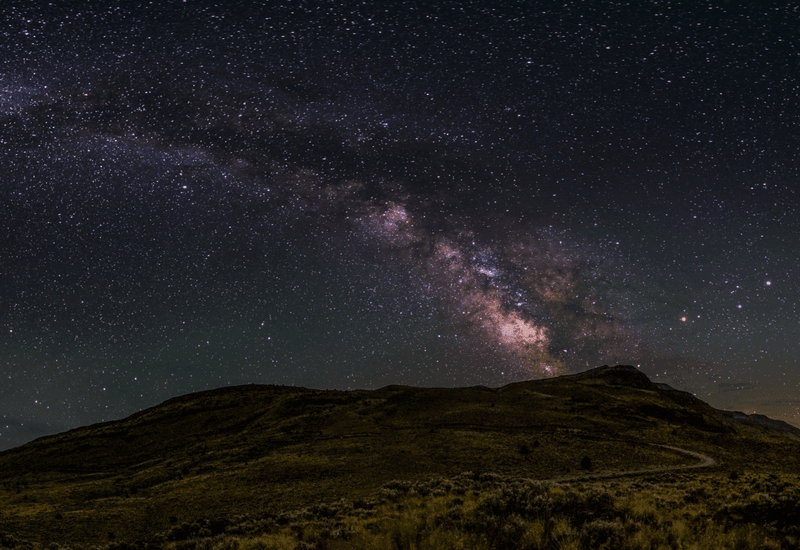
Miles from any major city, the park earned International Dark Sky Park status for its exceptional night sky viewing conditions. On clear nights, the Milky Way stretches across the heavens so brightly you can see your shadow by starlight alone.
Astrophotographers travel hundreds of miles to capture images here, where light pollution barely registers on sensitive equipment. Meteor showers, planets, and deep-space objects appear with stunning clarity through even basic telescopes.
Summer nights offer the best viewing, when warm temperatures make it comfortable to spend hours outside marveling at the cosmic display overhead.
7. Pinnacles Trail Leads to Spectacular Canyon Overlooks
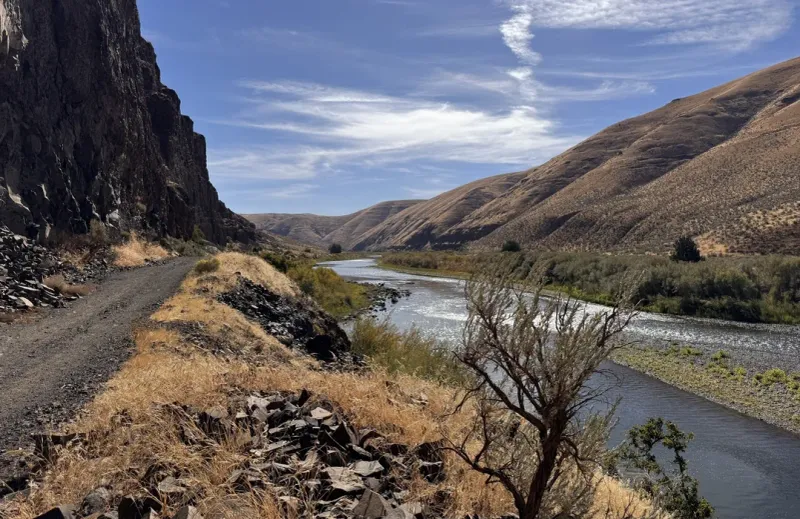
This 4.3-mile trail follows the John Day River downstream, passing towering rock spires and offering breathtaking views from multiple canyon rim viewpoints. The path winds through sagebrush meadows before climbing to dramatic overlooks hundreds of feet above the water.
Spring wildflowers transform the trail into a colorful carpet of lupine, balsamroot, and Indian paintbrush. Wildlife sightings are common, especially early in the morning when deer and elk move through the area.
The trail requires moderate fitness levels but rewards hikers with some of Oregon’s most spectacular high desert scenery and photo opportunities.
8. Lone Tree Campground Offers Riverside Camping Under Stars
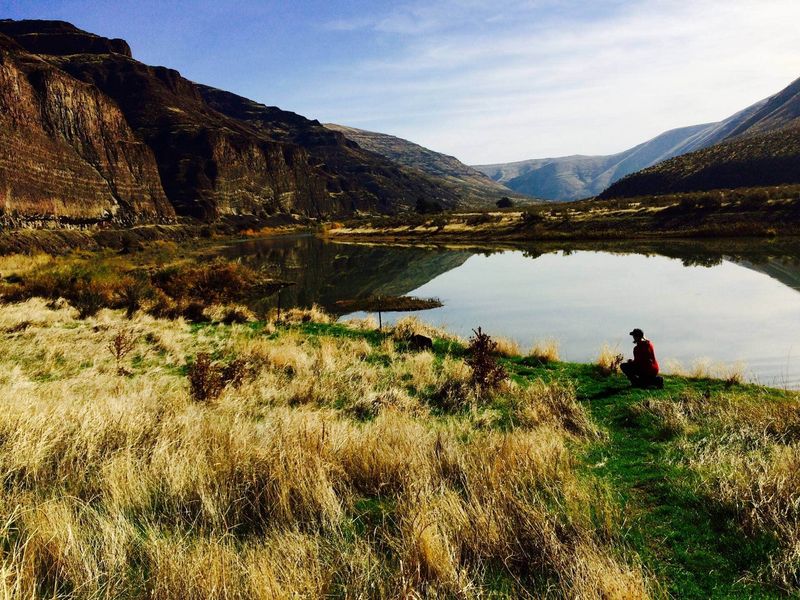
Primitive camping along the John Day River puts visitors right in the heart of canyon country, with 21 campsites, 14 walk-in tent spots, and four rustic cabins available. The sound of flowing water creates natural white noise perfect for deep sleep under brilliant stars.
Self-contained RVs fit in most sites, though hookups aren’t available, making this true backcountry camping. Each site includes a picnic table and fire ring for evening campfires and outdoor cooking.
Reservations are recommended during peak season, as word spreads about this hidden gem among serious outdoor enthusiasts seeking solitude and natural beauty.
9. Historic Ranching Heritage Lives On Through Preserved Buildings
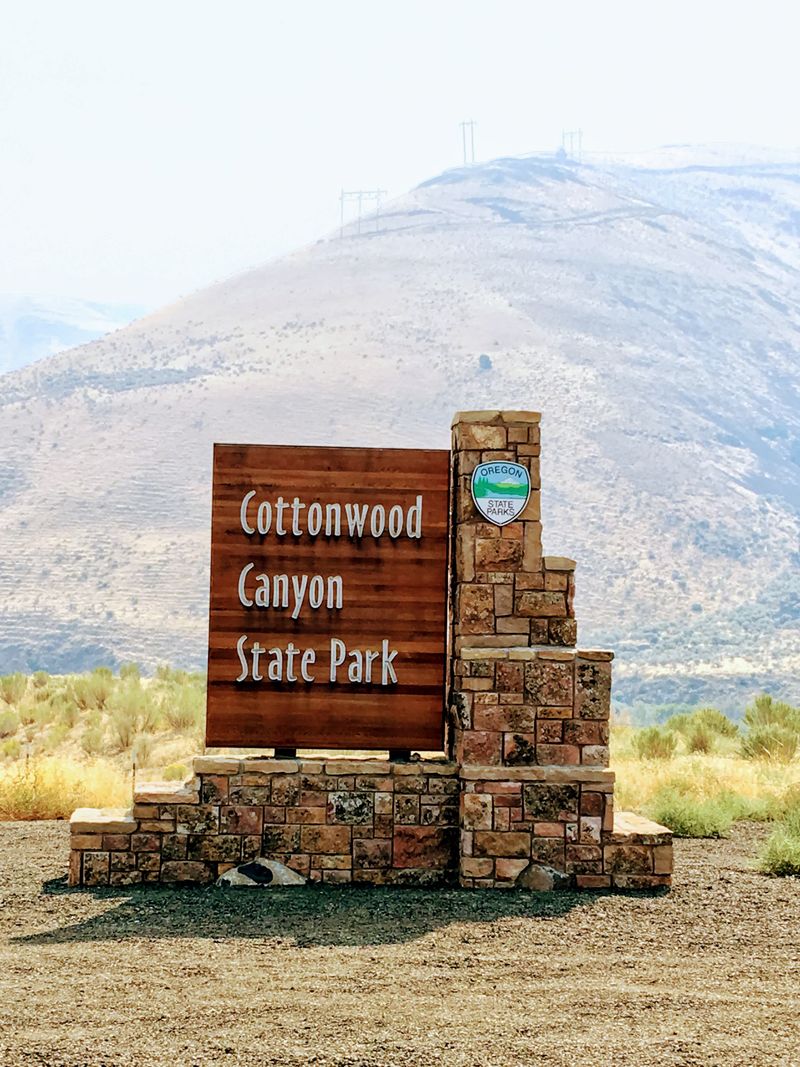
Before becoming a state park, this land supported cattle ranching for over a century, with remnants of that era still visible throughout the canyons. Old fence lines, corrals, and restored ranch buildings now serve as interpretive centers telling the story of eastern Oregon’s agricultural past.
The Lone Tree Ranch headquarters has been carefully preserved, showing how families lived and worked in this remote high desert environment. Weathered wooden structures and rusted equipment create fascinating photography subjects.
Interpretive signs explain how ranchers adapted to the harsh climate and challenging terrain, developing techniques still used in modern desert ranching operations.
10. Seasonal Transformations Create Year-Round Natural Beauty
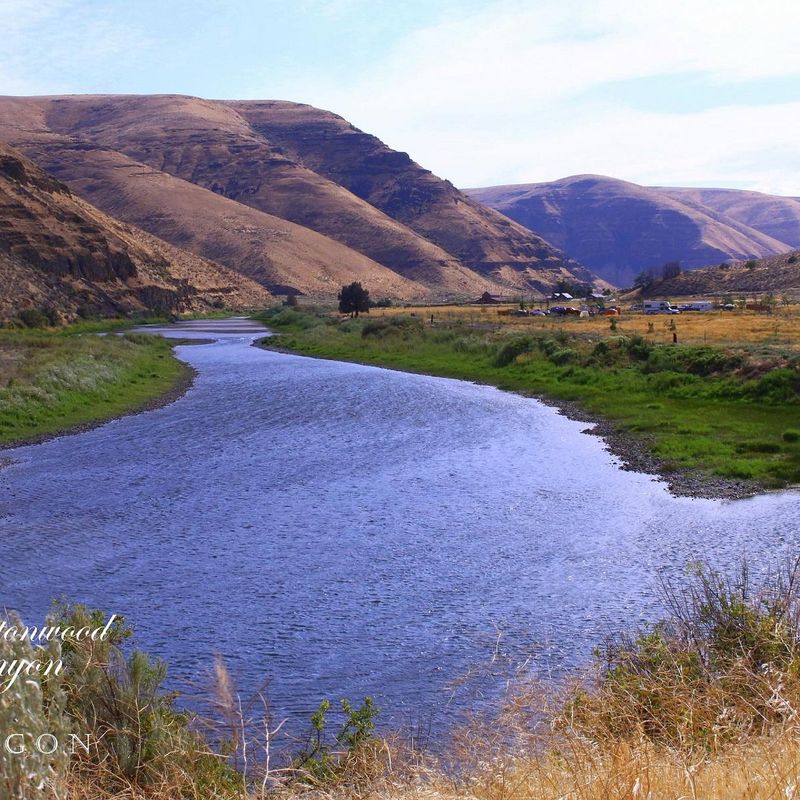
Each season brings dramatic changes to the canyon landscape, from spring’s explosion of wildflowers to winter’s stark beauty when snow dusts the rim rocks. Golden cottonwood trees along the river create stunning fall displays that rival any New England forest.
Summer brings intense heat and brilliant blue skies that make the basalt cliffs appear almost black by contrast. Spring wildflower blooms can be spectacular, with entire hillsides covered in yellow balsamroot and purple lupine.
Winter visits offer solitude and unique photographic opportunities, though visitors should prepare for potentially challenging weather conditions and limited services during colder months.

